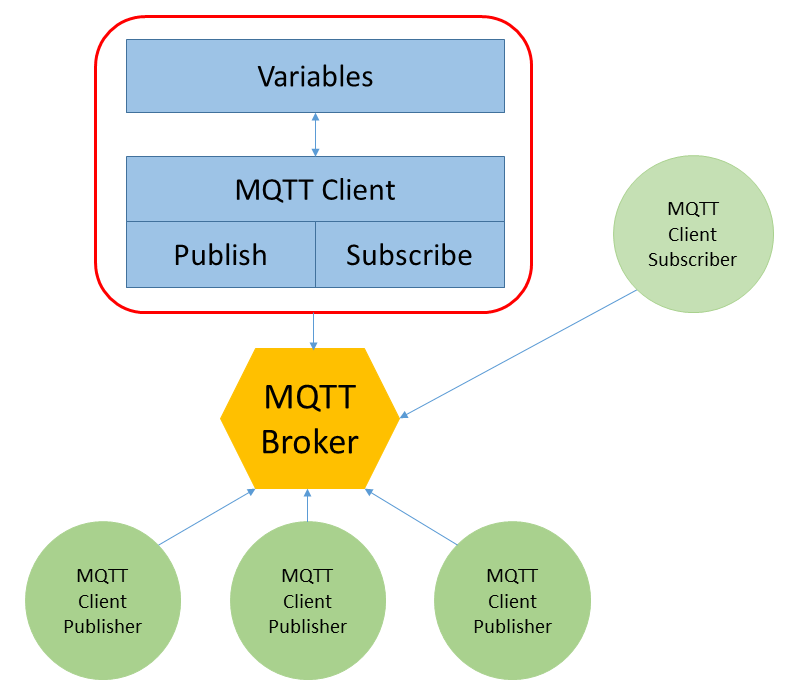Overview of the MQTT Add-on
MQTT (Message Queuing Telemetry Transport) is a lightweight publish / subscribe messaging transport protocol. It was originally designed and specified as part of an OASIS technical committee, and is now available as the ISO/IEC 20922 standard.
MQTT is commonly used with low power sensors and is also applied to other scenarios requiring message transport across enterprise software systems, and in particular in cloud-based architectures.
The MQTT protocol is based on the principle of publishing messages (PUB) and subscribing to topics (SUB), or "pub/sub" operations. MQTT Clients connect to a broker and subscribe to the topics they are interested in. MQTT Clients can also publish messages on topics. Any client can subscribe to the same topics. The broker act as a message relay for client/devices to connect to. The message payload is usually publisher-specific.
PcVue can act as an MQTT subscriber and as an MQTT publisher in architectures comprising one or more brokers. ![]() Show picture
Show picture
For a given variable, PcVue can behave:
- As a pure subscriber, in which case the variable value, and optionally the timestamp and quality are extracted from an MQTT message payload,
- As a pure publisher, in which case the variable value, and optionally the timestamp, quality and other variable attributes are put together in a message and sent to a broker,
- As a combined subscriber and publisher, allowing PcVue to keep the variable up-to-date based on messages it receives as a subscriber, and re-publish the variable (including other attributes) so that other MQTT subscribers can benefit from a normalized information thanks to a clean and standardized payload.
There are no configuration dialog's specific to the MQTT Add-on. At the time of writing, it uses a dedicated .ini file and regular configuration features.
